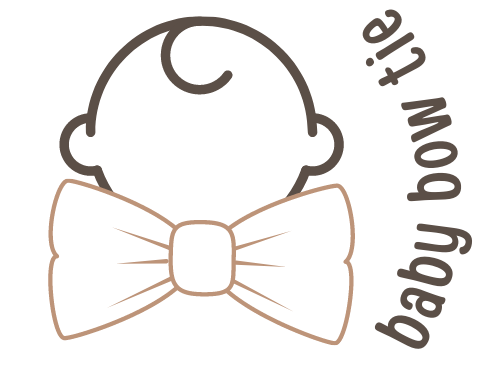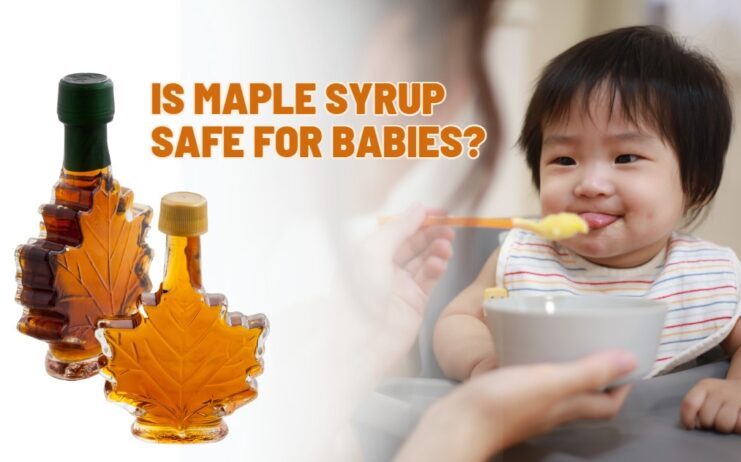Can babies eat maple syrup? Many parents wonder if they should offer their children syrup made from the sap of trees like maples, birches, and oaks as part of their diets. While delicious, maple syrup is packed with sugar and so it is important to determine if it’s safe for young children before introducing it into their diets.
To answer this question, we must consider several factors, such as nutrition, possible choking hazards, and health concerns. By understanding the benefits and risks associated with taking maple syrup in smaller amounts, parents can make an informed decision about whether or not to allow their babies to have a bit of the sweet treat.
Is Maple Syrup Safe for Babies?
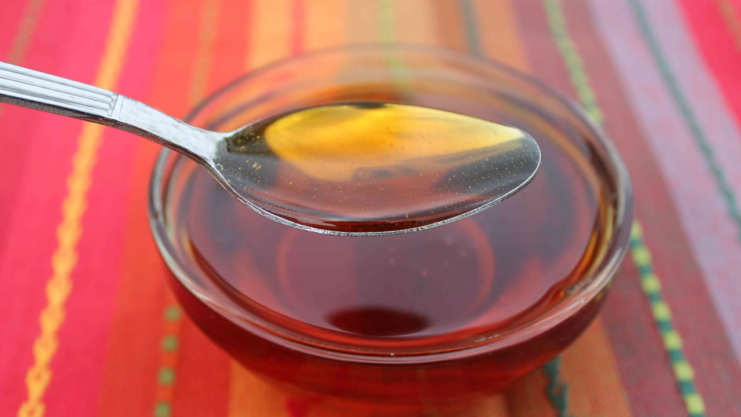
When it comes to giving babies food, it’s important to make sure that it is safe and nutritious. Maple syrup is a commonly used sweetener, and many parents are wondering if it is safe to give to their babies.
In this blog post, we’ll take a look at the safety of maple syrup for babies as well as explore some other sweeteners that may be more suitable for them.
Nutritional Value
Maple syrup isn’t just a great natural sweetener to use in baked goods and other recipes, it also contains essential vitamins and minerals. The total amount of nutrients in maple syrup depends on the variety, where it was sourced, and the processing method used to extract it.
Generally speaking, maple syrup contains minerals like zinc, manganese, iron, magnesium, and calcium. Vitamins B2 and B6 can also be found in smaller concentrations. It’s important to note that these are all present in very small doses — you would not be able to solely rely on maple syrup to meet your daily recommended intake levels of these nutrients.
Furthermore, regular consumption of pure maple syrup can have positive health effects if consumed judiciously — in moderation. Some studies suggest that it may help regulate blood sugar levels when consumed with a balanced diet due to its lower glycemic index when compared with white sugar or honey. Other evidence has been found suggesting antimicrobial activity with regard to bacteria commonly found in food products.
Nonetheless, there is no scientific backing for children under the age of one consuming maple syrup. Most health professionals suggest waiting until your baby is at least one year old before introducing this delicacy into their diet for its potential health benefits or flavor profiles. Additionally, even after this point, parental discretion should be exercised due to potential choking hazards related to any sweetened product regardless of type or origin!
Potential Allergens

When deciding if babies can eat maple syrup, it’s important to consider potential allergens that can occur in this sweet, natural product. Allergy to maple syrup is an uncommon food allergy but some infants, toddlers, and children may have a maple syrup allergy. Mild reactions, such as hives on the skin or an upset stomach, may occur after ingesting maple syrup. Anaphylaxis or a severe allergic reaction could develop if enough of the allergenic proteins found in maple syrup are consumed.
In addition to the potential for allergenicity, it’s also important to remember that maple syrup is very high in sugar content and thus offers no nutritional value for babes in arms. Breast milk or infant formula should remain the primary source of nutrition for babies under one year of age.
If parents are interested in adding natural sweeteners like honey or pure unsweetened organic grade A or B dark amber maple syrup to recipes for babies over six months of age (following your pediatrician’s recommendation), look for products from trusted sources that process the product cleanly and use strict quality control protocols within their facilities so as to reduce potential contamination with other common food allergens such as milk proteins, soybeans, and wheat – ingredients which are not typically used during the processing stage but which could be airborne within any facility where contaminated food items are also present.
When serving any type of food item (including pure organic maple syrup)to your baby always follow standard guidelines regarding portion size and use only a small quantity when introducing any new type of food into your infant’s diet since malnutrition can be such an issue with young babies who are not given adequate sustenance from breastmilk or formula alone – seek advice from your pediatrician prior to introducing new foods as necessary.
Age Guidelines for Introducing it to Babies
Before introducing it as an edible food for infants, It’s important to discuss this matter with a pediatrician. According to the American Academy of Pediatrics (AAP), solid food should not be introduced before 4–6 months of age. As for maple syrup, infants typically can start trying it at 6–12 months of age, depending on the infant’s development and eating abilities.
An infant can show signs of being ready for solids when they can:
- hold up their head
- sit up with the help
- open their mouth and lean forward when offered food
- show an interest in food or try to grab food
It’s best to practice a wait-and-see approach as babies grow and develop. However, if parents decide that they want their baby to try maple syrup, the following tips should be taken into account:
- Use real maple syrup and avoid artificial alternatives or pancake syrups which tend to contain added sugar or artificial sweeteners like high fructose corn syrup.
- Start small with a tiny teaspoon and keep in mind that all new foods may cause an allergic reaction until a baby’s digestive system matures around 1 year old. If this happens, contact your baby’s doctor immediately.
- Refined sugar can easily fill up a baby’s stomach without providing adequate nutrition; it is best not to overdo it when offering additional refined sugars like maple syrup at such early stages in life.
How to Introduce Maple Syrup to Babies
Introducing it to babies can be a great way to add sweetness to their diet naturally. However, it is important to know the proper way to introduce maple syrup to babies and to be aware of the potential risks associated with it.
Preparing it for Babies
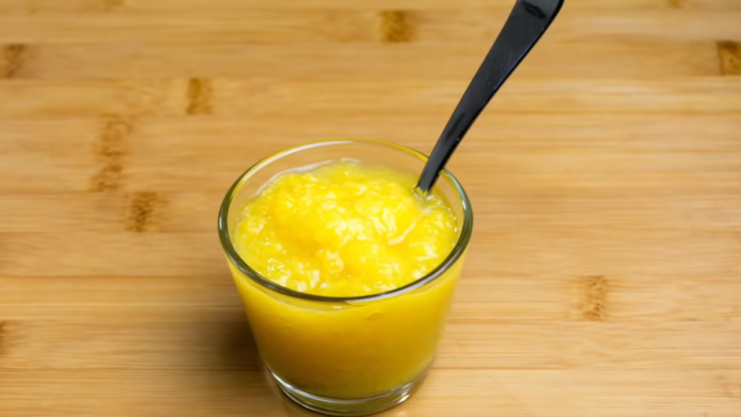
It is important to remember that because babies do not have well-developed digestive systems, great care must be taken when introducing them to new food items. For this reason, if you are considering introducing maple syrup to a baby’s diet, it is important to ensure that it is done carefully and safely. Experts recommend avoiding the use of table sugar entirely for children under 12 months of age and minimizing the addition of honey for those under 1 year old.
When introducing maple syrup to a baby’s diet, it’s important to choose one that has been graded according to quality standards set forth by the United States Department of Agriculture (USDA). This ensures that your baby has access to a pure and safe product. Whether you are using Grade A or Grade B it should have a distinct maple aroma and flavor that will be enjoyable for your baby. Try mixing equal parts maple syrup with plain yogurt or oatmeal served at room temperature or slightly warmer temperatures.
It’s always a good idea to talk with your pediatrician prior to adding any new foods into your baby’s diet and they can help guide you in making informed decisions based on dietary recommendations specific to the needs of your little one.
Serving it to Babies
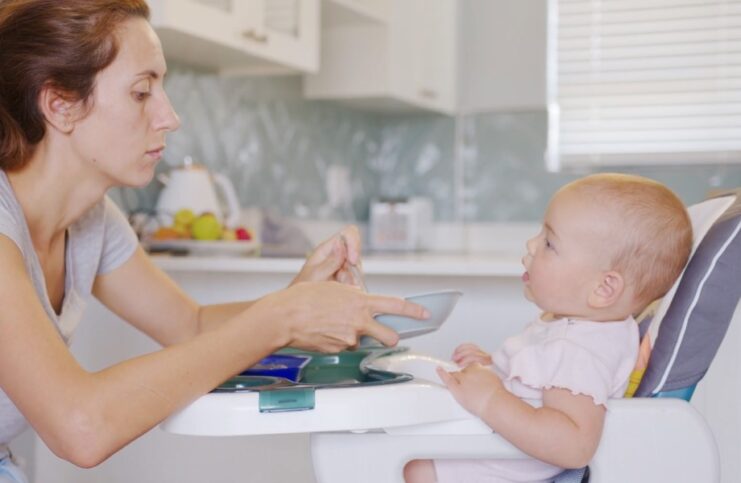
Serving it to babies can be a great way to introduce them to naturally sweet items like fruit while keeping them away from processed and refined sugars. Babies as young as 6 months can safely enjoy small amounts of pure maple syrup as part of their diets. As with many new foods, always maintain close monitoring and look for signs of allergic reactions or digestive discomfort.
While there are some common guideposts for introducing new foods, families should still be sure to check with their pediatrician before adding any new food item to their baby’s diet. The key is introducing the maple syrup slowly and in small amounts with each meal. Here are some tips parents should consider when adding maple syrup to a baby’s diet:
- Choose organic pure maple syrup that has not been made with artificial ingredients or added preservatives.
- Mix smaller amounts of pure maple syrup into plain yogurt, oatmeal, and pureed fruits like apples or pears.
- Do not heat pure maple syrup due to concern over botulism in infants under 1 year old; instead, just add it directly on top of the food item.
- Monitor your baby’s digestion after feeding them foods prepared with Pure Maple Syrup; look out for frequent gas, loose stools, or eczema/rash that may indicate an allergy or sensitivity to certain foods including Pure Maple Syrup intake.
Maple Syrup vs. Other Sweeteners: Which is Better for Babies?
When it comes to introducing sweeteners to a baby’s diet, many parents wonder which is the best option. It is a popular natural sweetener that is often used as an alternative to processed sugars. However, it’s important to consider how it compares to other sweeteners before giving it to your baby.
One advantage of maple syrup is that it contains some nutrients, such as zinc and manganese. These minerals are important for your baby’s growth and development. Additionally, it is less refined than many other sweeteners, so it contains fewer additives and chemicals.
However, it is still a sweetener and should be used in moderation. Too much sugar can lead to dental problems and unhealthy weight gain. In addition, some babies may be allergic to maple syrup or may experience digestive discomfort after consuming it.
Other sweeteners, such as honey, should not be given to babies under the age of one year due to the risk of botulism. Brown sugar and white sugar are highly processed and contain few nutrients. Artificial sweeteners, such as aspartame and saccharin, should be avoided as well.
Ultimately, the best sweetener for your baby depends on individual factors such as their age, dietary needs, and any allergies or sensitivities they may have. Consult with your pediatrician before introducing any new foods or sweeteners to your baby’s diet.
Recipes
It is a great way to add sweetness to a variety of dishes for babies. Not only is it naturally sweet, but it also contains many important vitamins and minerals that can benefit a growing baby.
Here, we’ll talk about some recipes that include maple syrup that can help you get creative in the kitchen while your baby receives some essential nutrition.
Sweet Potato Pancakes
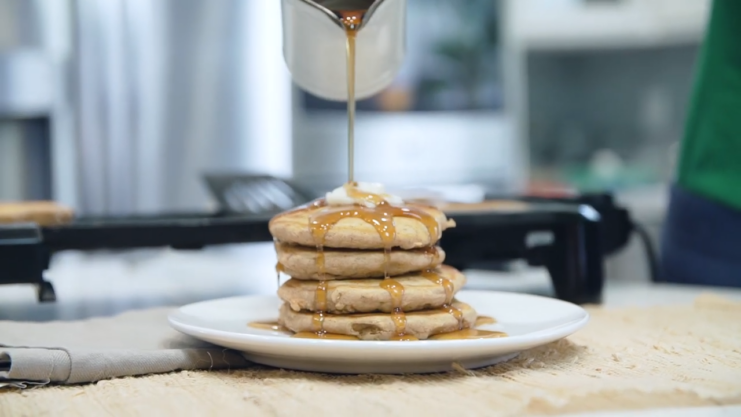
Sweet potato pancakes are a delicious way to introduce maple syrup to your baby’s diet. This recipe is the perfect breakfast for little ones who are 6 months old or older, as long as your pediatrician approves! As a natural sweetener, maple syrup has a unique flavor that will add depth to your baby’s meals.
Ingredients:
- 1 cup mashed sweet potatoes
- 2 tablespoons whole wheat flour
- ½ teaspoon ground cinnamon
- ¼ teaspoon ground nutmeg
- ¼ cup almond milk (or any other breastfeeding-safe option you prefer)
- 1 egg, lightly beaten
For Serving: – Organic maple syrup
Instructions:
- In a medium bowl, mix together the mashed sweet potatoes, flour, cinnamon, and nutmeg until fully combined.
- Add almond milk and egg to the bowl and mix until just combined—the mixture will be stiff!
- Heat oil in a nonstick skillet over medium heat and drop small spoonfuls of the pancake batter onto the skillet using a rubber spatula.
- Cook pancakes for about 3 minutes or until golden brown on both sides.
- Serve with a dollop of organic maple syrup for babies 6 months old or older (make sure you consult with your pediatrician before adding any new foods).
Maple Syrup Porridge
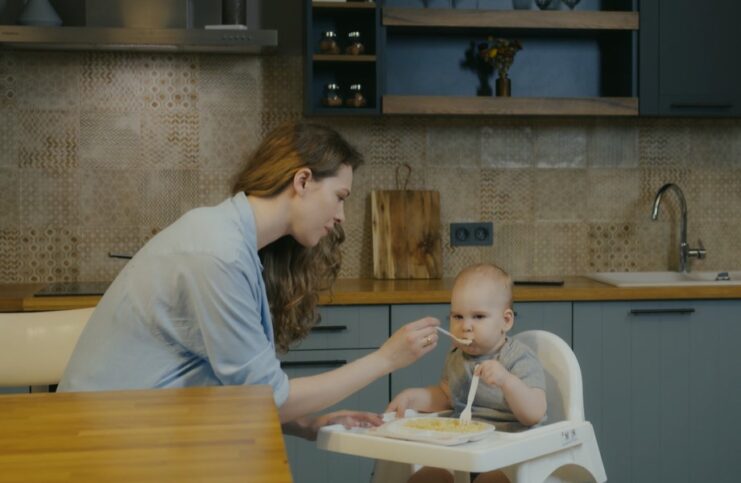
This is a delicious and nutritious way to give your baby a sweet treat that’s safe for their developing digestive system. Porridge is incredibly easy to make and can be adapted with different ingredients as your baby grows. As well as providing essential nutrients, it’s an excellent source of carbohydrates, providing energy to their young bodies.
To prepare it, start by boiling one cup of water or unsweetened almond milk in a medium-sized saucepan over medium heat. Once the liquid boils, add one tablespoon of rolled oats and reduce the heat so that it simmers. Stir the oats constantly for five minutes until they become tender and creamy.
Next, add one tablespoon of pure maple syrup to the porridge – you may have to increase or decrease this amount depending on your baby’s tastebuds – along with a pinch of cinnamon for flavor if desired. Stir until everything is fully incorporated before spooning into bowls and serving warm or cooled slightly depending on your baby’s preferences. Enjoy!
Maple Syrup Banana Bread
Banana bread is a favorite sweet treat for all ages, and babies can enjoy it too. Maple syrup not only adds an interesting flavor, but it also helps to sweeten the bread without adding unnecessary sugar or artificial sweeteners. You can also use wholemeal flour to add more fiber and nutrients to your baby’s snack!
Ingredients:
- 2 overripe bananas, mashed with a fork
- 1/3 cup melted butter or coconut oil (Oil works better than butter)
- 2 eggs, beaten
- 1 teaspoon vanilla extract
- ¼ cup maple syrup
- ½ teaspoon baking soda
- ½ teaspoon baking powder
- ⅓ cup plain yogurt (optional)
- ½ cup wholemeal flour
Instructions:
Preheat oven to 350°F/177°C. Grease a 9×5 inch loaf pan and set aside. Mash the ripe bananas with a fork in a large bowl until you have a banana puree. In a small bowl combine melted butter or coconut oil along with eggs, vanilla extract, and maple syrup. Whisk until well combined – about 2 minutes. Add baking soda and baking powder to the wet ingredients then mix again for another minute. Fold in the mashed banana mixture into the wet ingredients until fully combined. Finally, fold in plain yogurt followed by wholemeal flour until just combined – be careful not to over mix as this will result in dense banana bread instead of fluffy one! Pour the batter into the prepared loaf pan and bake in preheated oven at 350°F/177°C for 40 – 55 minutes or until the toothpick inserted in the center comes out clean. Allow banana bread to cool completely before cutting – at least 30 minutes. Serve & enjoy!
FAQs
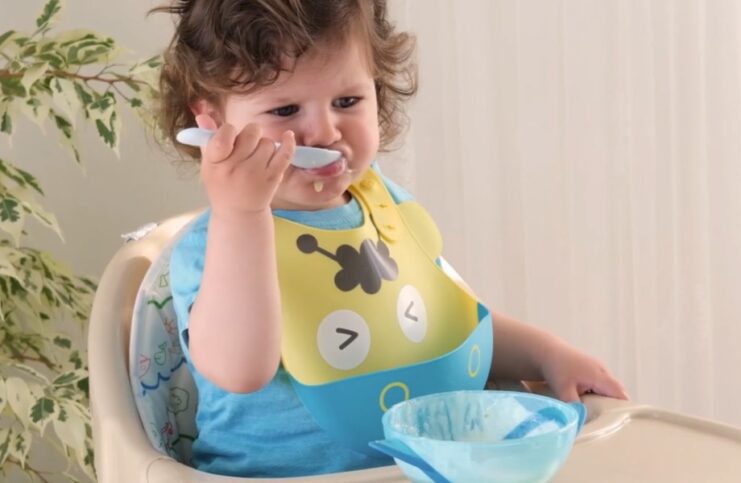
How much maple syrup can I give my baby?
It’s best to limit your baby’s intake of it to a small amount, such as a drizzle on their oatmeal or pancakes.
Can I give my baby maple syrup instead of sugar?
It is a natural sweetener that is less refined than many other sweeteners, but it should still be used in moderation.
Is it safe to give babies honey and maple syrup interchangeably?
No, babies under the age of one year should not be given honey due to the risk of botulism.
How do I know if my baby is ready for maple syrup?
Babies are typically ready for solid foods, including sweeteners, around six months of age. Consult with your pediatrician before introducing any new foods or sweeteners to your baby’s diet.
Can maple syrup cause digestive discomfort in babies?
Some babies may experience digestive discomfort, such as diarrhea, after consuming it.
Are there any risks associated with giving babies maple syrup?
Too much sugar can lead to dental problems and unhealthy weight gain. Additionally, some babies may be allergic to it or may experience digestive discomfort after consuming it.
Can I mix maple syrup with baby formula or breast milk?
It’s not necessary to mix it with baby formula or breast milk. If you want to sweeten your baby’s food, a small drizzle of maple syrup is sufficient.
Conclusion
In conclusion, it should not be given to babies under 12 months of age. If your baby is over 12 months old, it is safe to give them a small amount of 100% pure maple syrup as a sweetener in foods like oatmeal or yogurt. Be sure to talk to your pediatrician before giving any sweetener to your baby.
Keep in mind that it is high in calories, low in nutrients, and more importantly, contains no essential vitamins or minerals for babies. Make sure you are providing your baby with a balanced diet and plenty of liquids for hydration before offering maple syrup as an occasional treat!
